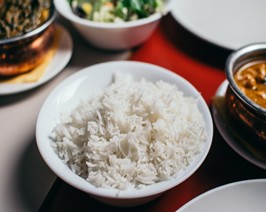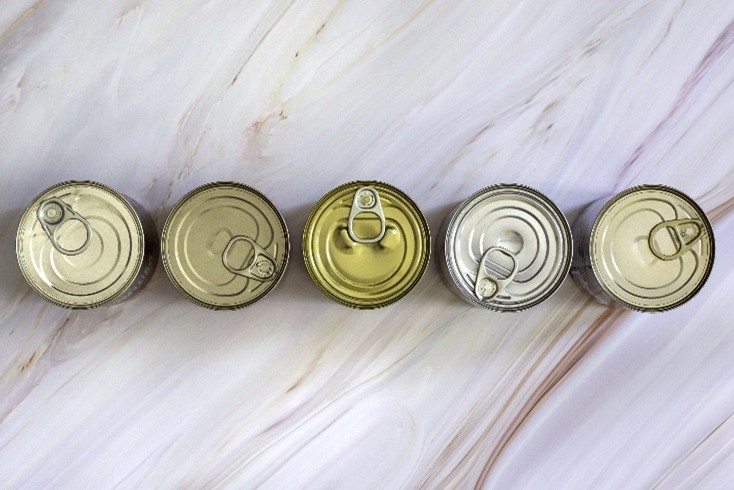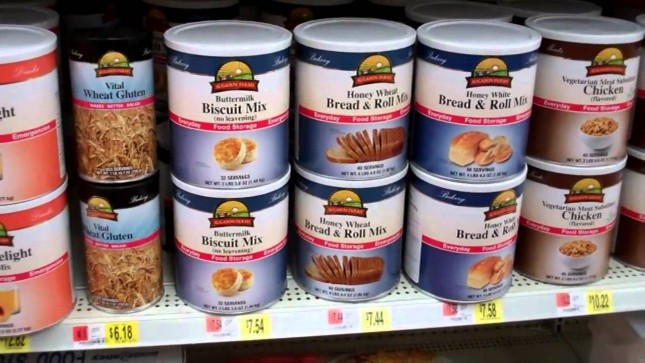Long-Term Shelf Life & Nutrient Degradation
Most of us have some items sitting in our pantries that haven’t seen the light of day for at least a year. You go to the store, you see something interesting, throw it in the cart, and then … you forget it’s there. Later, you might forage through your pantry and rediscover it. Is it still okay to eat? Does it still have any nutritional value? Certain types of food have a longer shelf life than others.
Dried beans, for instance, will remain edible essentially forever. Unopened maple syrup, popcorn, and salt are some other foods that don’t necessarily have an expiration date. Other foods have a shorter shelf lifespan. Canned tuna, for instance, can last for up to five years while rice is good for 10 years or longer.

Even though foods are often fine to eat past their expiration dates (see our article HERE on expiration dates), the quality can begin to degrade after a period of time. Manufacturers want you to experience the best quality they have to offer, and they know that the likelihood of you experiencing their best product is diminished after a particular period, hence the expiration dates.
The shelf life and nutrient content of pantry foods vary widely depending on the type of food, how it’s stored, and the packaging used. Here’s an overview of what happens to common pantry staples over time:
Shelf Life of Common Pantry Foods
- Dried Beans: When stored in a cool, dry place, dried beans can remain edible for many years—sometimes considered “indefinitely” if kept in ideal conditions. However, their nutritional value begins to decline after about two to three years, and most naturally occurring vitamins are lost within five years. Even if old beans are safe to eat, they may require longer cooking times and have a tougher texture 🔗.
- Rice: White rice can last up to 10 years or more when properly stored, though most consumer packages suggest a shelf life of up to two years for best quality. Brown rice, due to its higher oil content, has a much shorter shelf life—typically 3–6 months—and can become rancid if not kept cool and dry 🔗🔗.
- Canned Goods: Canned tuna and similar low-acid canned goods can last up to five years unopened, but once opened, they should be refrigerated and consumed within a few days to avoid spoilage 🔗.
- Other Shelf-Stable Foods: Salt, sugar, baking soda, and certain other dry goods can last for decades if kept dry and sealed. Maple syrup and popcorn, if unopened and stored properly, can also last many years 🔗.

Nutrient Degradation Over Time
- Loss of Nutrients: Even when food remains safe to eat, its nutritional value can degrade. For example, dried beans lose most of their vitamins after a few years, though their protein and fiber content remain relatively stable for much longer 🔗.
- Impact of Storage Conditions: Proper storage is crucial. Exposure to heat, light, and oxygen can accelerate nutrient loss, especially for vitamins like A, C, and E. Using airtight, opaque containers and keeping food in a cool, dry place helps preserve nutrients 🔗 🔗.
- General Trend: Over time, all stored foods will experience some loss of quality and nutrients. Fresh produce is the most vulnerable, but even shelf-stable foods like
- grains and legumes lose vitamins and minerals as they age4 🔗.
Practical Tips for Long-Term Storage
- Use Proper Packaging: Store foods in airtight, opaque containers to protect against moisture, pests, and light 🔗.
- Control Temperature and Humidity: Keep your pantry cool and dry—ideally below 24°C (75°F) for optimal shelf life 🔗 🔗.
- Rotate Stock: Use a “first in, first out” system to ensure you consume older items before they degrade in quality or lose too much nutritional value 🔗.
- Label and Date: Mark containers with the purchase or storage date to help manage rotation and avoid waste 🔗.
Summary Table
| Food Item | Typical Shelf Life (Unopened) | Notes on Nutrient Degradation |
| Dried Beans | Indefinite (years) | Vitamins lost after 3–5 years 🔗 |
| White Rice | 10+ years (proper storage) | Remains edible, nutrients fade 🔗 🔗 |
| Brown Rice | 3–6 months | Becomes rancid more quickly 🔗 |
| Canned Tuna | Up to 5 years | Safe, but quality may decline 🔗 |
| Salt/Sugar | Decades | No significant nutrient loss 🔗 |
| Maple Syrup | Many years | No significant nutrient loss 🔗 |



